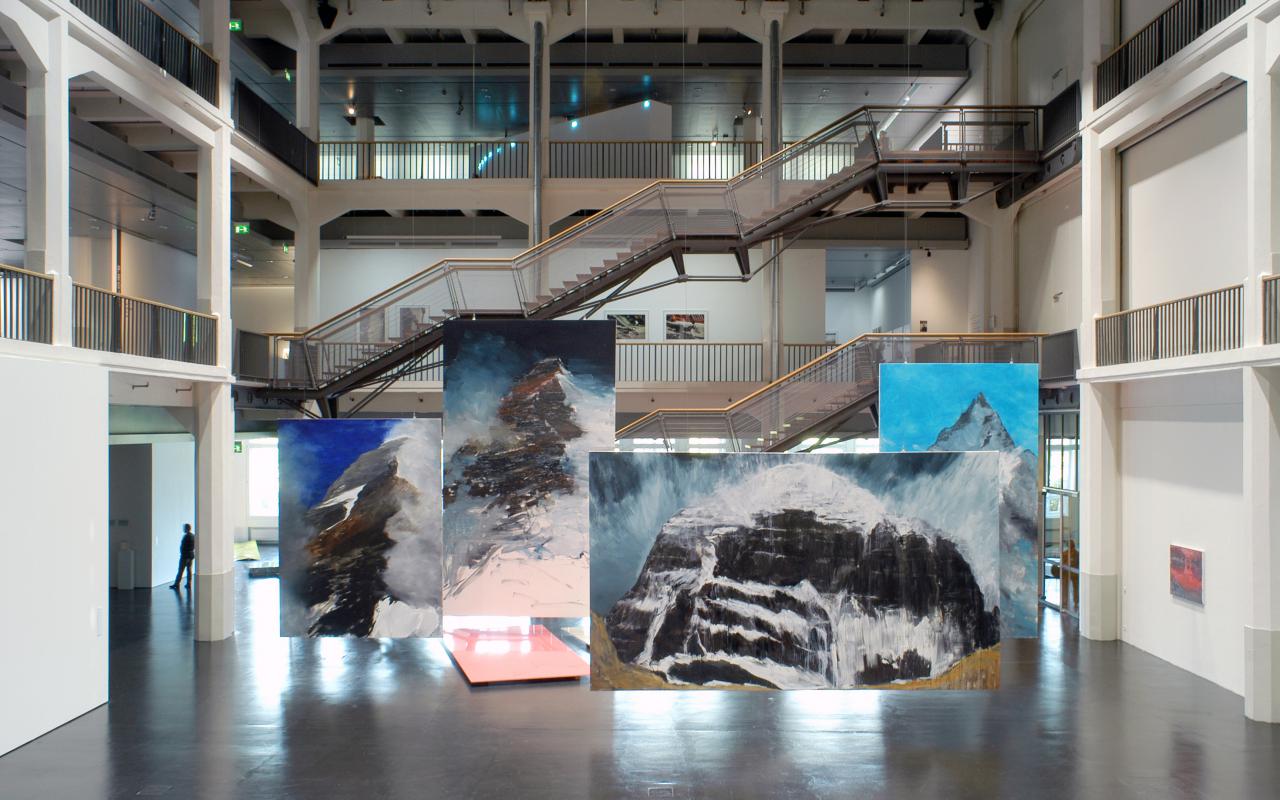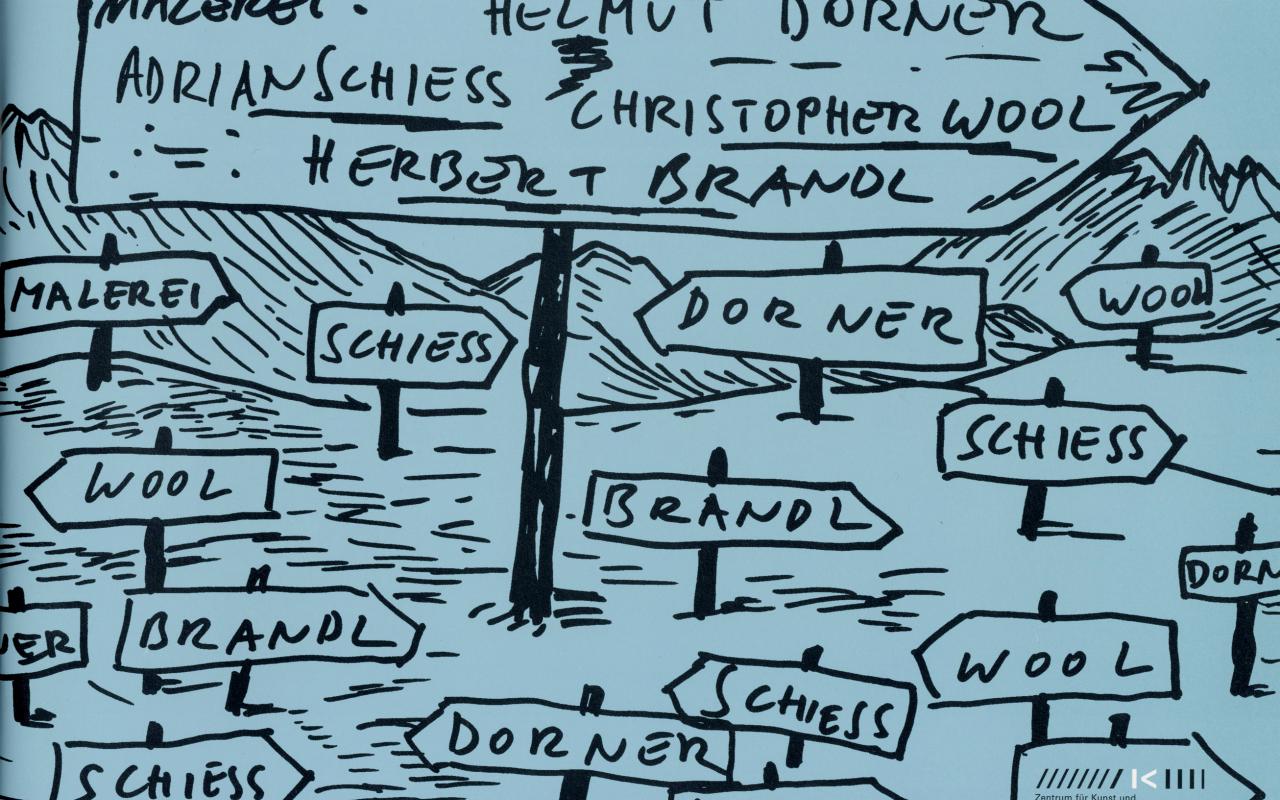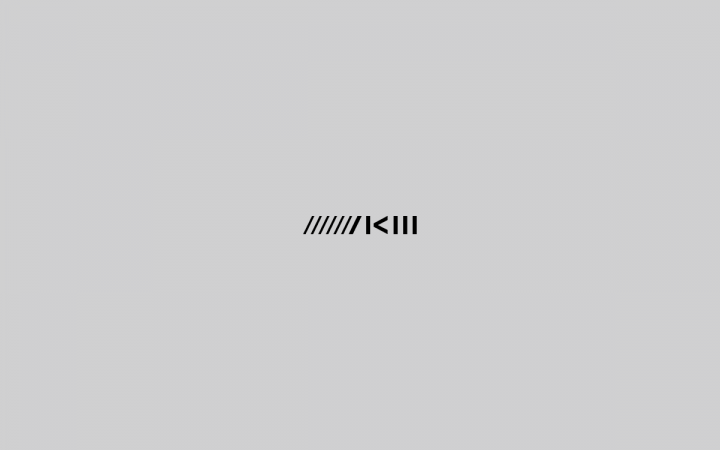Pintura

Herbert Brandl, Helmut Dorner, Adrian Schiess, Christopher Wool
Sat, May 29, 2004 – Sun, August 08, 2004
In this exhibition, ZKM presents the work of three European and one American painters of the middle generation. All four of them are internationally renowned artists. Although they have known about one another and mutually appreciated each other’s work for quite some time, this is the first time they exhibit together.
The artists tie up to the history of modern autonomous painting, but in a critical and heterogeneous fashion. Their works defy the current assumption that painting is a medium amongst others that can be used for definite purposes beyond itself and they also defy any attempts to persevere in the continuation of modernist painting in a historistic fashion.
Herbert Brandl paints both »abstract« and »figurative« paintings. Painting prevents transparency and reflection, the gaze is caught at the picture surface and all the associations of the observer arise from the movements, layers and colours of the material spread out on the canvas. On the other hand, during the last few years Bradl has been painting large-scale landscapes after photographs, changing between the rendition of a real-life model and painterly excess. »Abstraction« and »figuration« are not two mutually exclusive opposites, but modifications of painting, which they absolve of any obligation to a binding ideology.
After many years of growth and experimentation, Helmut Dorner has recently found his way to extraordinary works that are almost incomparable to other paintings. These are large formats using flat acrylic glass cases as image carriers on which he spreads gloss paint. Shining surfaces with stains and pools of dried varnish cover the milky-transparent background. Dorner frequently drips varnish in closely related colours on the horizontally positioned acrylic glass plates and provokes different surfaces by determining the drying process through gestural interaction. Expansion and blending of colour stains are only partially controlled by the painter, and yet he manages to make all randomness seem essential for the sake of the image.
Over the years, Adrian Schiess has developed several types of work differing in medium and appearance, all of which arise from his analysis of painting. Flat Works are colour-lacquered plates lying on the floor. The surrounding colours and shapes are reflected on the surface so that they are never visible »as such« but only as an appearance. Small-scale paintings, for the most part thickly encrusted with oil paint, operate as a reversal of the reflective, glossy surfaces. Finally, Schiess uses electronic manipulation to produce colour gradients over time which are shown on monitors or projected on walls.
Christopher Wool has a way of painting as though his painting was something negligible, something that is rather accidental than wanted, maybe a coincidence, a trace that stays behind when the painter squeezes the last drops of paint from his roll. This would be direct painting, painting as ready-made. Yet Wool subjects it to a process of reproduction and reflection by photographing his own paintings, printing them as seriagraphy [with visible screen dots] on an image carrier and using them again as a basis for painting. The seemingly accidental, rather natural than artificial impression is created by acts of precise control.
The exhibition took place at the Museu Serralves in Porto earlier this year, without the participation of Christopher Wool. It was conceived by Ulrich Loock, deputy director of the museum.
The artists tie up to the history of modern autonomous painting, but in a critical and heterogeneous fashion. Their works defy the current assumption that painting is a medium amongst others that can be used for definite purposes beyond itself and they also defy any attempts to persevere in the continuation of modernist painting in a historistic fashion.
Herbert Brandl paints both »abstract« and »figurative« paintings. Painting prevents transparency and reflection, the gaze is caught at the picture surface and all the associations of the observer arise from the movements, layers and colours of the material spread out on the canvas. On the other hand, during the last few years Bradl has been painting large-scale landscapes after photographs, changing between the rendition of a real-life model and painterly excess. »Abstraction« and »figuration« are not two mutually exclusive opposites, but modifications of painting, which they absolve of any obligation to a binding ideology.
After many years of growth and experimentation, Helmut Dorner has recently found his way to extraordinary works that are almost incomparable to other paintings. These are large formats using flat acrylic glass cases as image carriers on which he spreads gloss paint. Shining surfaces with stains and pools of dried varnish cover the milky-transparent background. Dorner frequently drips varnish in closely related colours on the horizontally positioned acrylic glass plates and provokes different surfaces by determining the drying process through gestural interaction. Expansion and blending of colour stains are only partially controlled by the painter, and yet he manages to make all randomness seem essential for the sake of the image.
Over the years, Adrian Schiess has developed several types of work differing in medium and appearance, all of which arise from his analysis of painting. Flat Works are colour-lacquered plates lying on the floor. The surrounding colours and shapes are reflected on the surface so that they are never visible »as such« but only as an appearance. Small-scale paintings, for the most part thickly encrusted with oil paint, operate as a reversal of the reflective, glossy surfaces. Finally, Schiess uses electronic manipulation to produce colour gradients over time which are shown on monitors or projected on walls.
Christopher Wool has a way of painting as though his painting was something negligible, something that is rather accidental than wanted, maybe a coincidence, a trace that stays behind when the painter squeezes the last drops of paint from his roll. This would be direct painting, painting as ready-made. Yet Wool subjects it to a process of reproduction and reflection by photographing his own paintings, printing them as seriagraphy [with visible screen dots] on an image carrier and using them again as a basis for painting. The seemingly accidental, rather natural than artificial impression is created by acts of precise control.
The exhibition took place at the Museu Serralves in Porto earlier this year, without the participation of Christopher Wool. It was conceived by Ulrich Loock, deputy director of the museum.
- Credits
- Ulrich Loock (Curator)
- Exhibitions team
- Rainer Gabler (technical participation)
Martin Häberle (technical participation)
Christof Hierholzer (technical participation)
Marianne Meister (registrar) - Organization / Institution
- ZKM | Museum für Neue Kunst
- Sponsors
Amerika Haus ; Pro Helvetia, Arts Council of Switzerland


